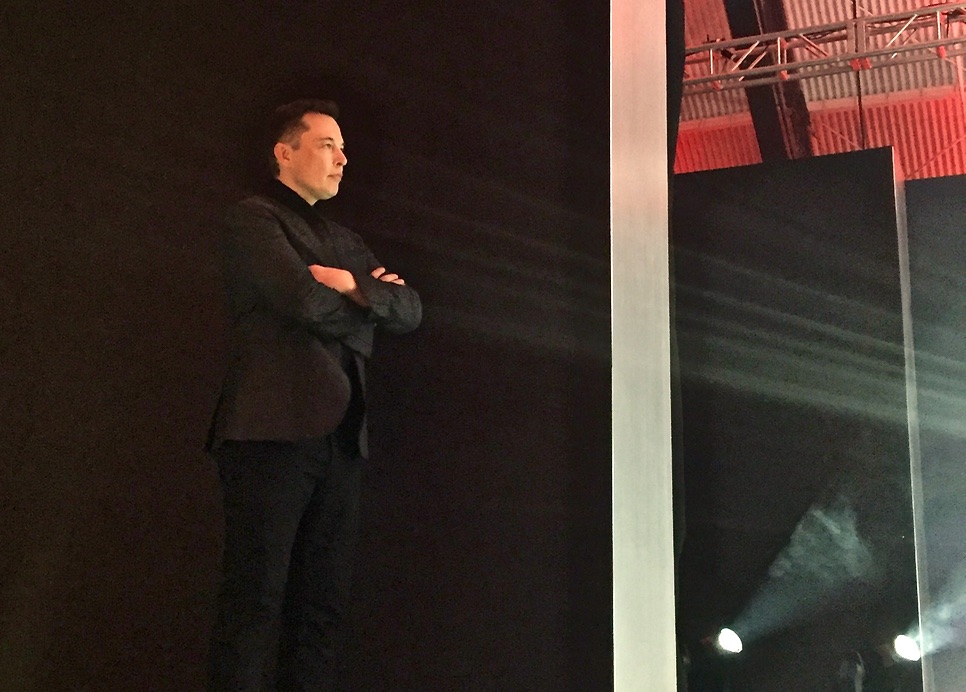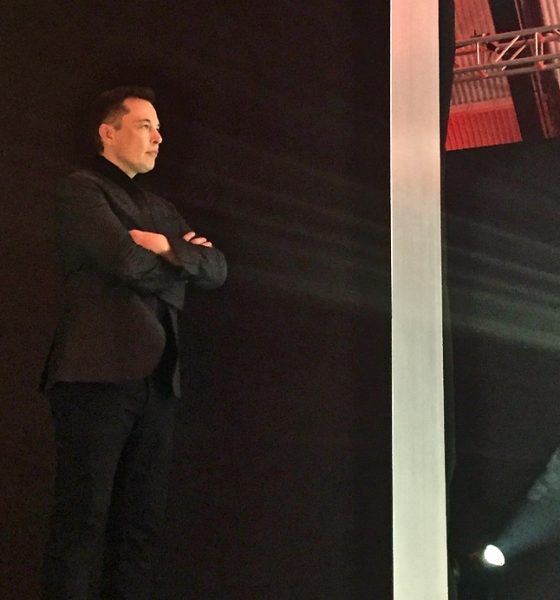

News
Elon Musk left OpenAI due to conflict of interest with Tesla
OpenAI, the nonprofit research firm co-founded by Elon Musk, announced that the serial tech entrepreneur is stepping down from the organization’s board of directors. According to an official announcement by the nonprofit, Elon’s departure is partly due to Tesla’s AI projects, which could result in a potential conflict of interest for the CEO.
Musk’s departure from OpenAI’s board does not mean that he is relinquishing ties with the nonprofit, however. In a blog post about its new supporters, the research firm asserted that the Tesla CEO will be staying on as a benefactor and advisor for the organization.
“Elon Musk will depart the OpenAI Board but will continue to donate and advise the organization. As Tesla continues to become more focused on AI, this will eliminate a potential future conflict for Elon.”
As Tesla continues to evolve its Autopilot suite of features and aims to complete its first coast-to-coast fully autonomous drive this year, the Silicon Valley electric carmaker is said to be working on its own AI-based chips that will power the company’s future fleet of driverless cars. Musk revealed his efforts to produce a custom AI chip during a machine learning conference held last year, telling event attendees that Tesla is developing specialized AI hardware that will be the “best in the world.” According to The Register, Musk told event attendees, “I wanted to make it clear that Tesla is serious about AI, both on the software and hardware fronts. We are developing custom AI hardware chips”.
Stepping down from OpenAI’s board seems to be a logical step for Musk as his focus on developing advanced artificial intelligence systems can be misconstrued by a non-profit that aims to be the watchdog for friendly AI development. Prior to the announcement of Elon Musk’s departure from OpenAI’s board, the nonprofit published a paper discussing the possible dangers of AI-based attacks. According to OpenAI’s study, it is now time for policymakers and individuals to be aware of ways that AI-based systems can be used maliciously, especially considering the ever-evolving artificial intelligence landscape.
To conduct the study, OpenAI collaborated with a number of researchers from other organizations, including the Future of Humanity Institute, the Centre for the Study of Existential Risk, the Center for a New American Security, and the Electronic Frontier Foundation.
Discussing the findings of their research, the authors of the study wrote that while investigations on the benefits of AI are widespread, studies on the dangers of advanced, intelligent machines are relatively few. As the field of artificial intelligence begins to expand and evolve, OpenAI’s researchers believe that threats associated with the technology would also start to grow and develop.
As noted in the study, artificial intelligence can expand existing threats, since the scalable use of AI technology can be utilized to lower the cost of attacks. With AI, even real-world attacks requiring human labor can be accomplished by machines that could think within and beyond their programming.
OpenAI’s new paper also discussed the emergence of new threats, which could rise through the use of systems that engage in tasks that are impractical for humans. The researchers also advised that the time might soon come when the AI-focused attacks can be finely targeted and challenging to attribute. With these in mind, the OpenAI researchers, together with co-authors of the study, recommended a series of contingencies that policymakers, as well as those involved in the research field, can implement to prevent and address scenarios when intelligent systems can be used maliciously.
RELATED: China is building a massive campus for AI development
According to the recently published OpenAI paper, the time is right for policymakers to collaborate with technical researchers to investigate, prevent, and mitigate potential malicious uses of artificial intelligence. OpenAI also advised engineers and researchers to acknowledge the dual-use nature of their work, allowing misuse-related considerations to be part of their research priorities. Furthermore, the nonprofit called for more mature methods when addressing AI’s dual-use, especially among stakeholders and domain experts involved in the field.
In conclusion, the OpenAI researchers and their peers admitted that while uncertainties remain in the AI industry, it is almost certain that artificial intelligence will play a huge role in the landscape of the future. With this in mind, a three-pronged approach — consisting of digital security, physical security, and political security — would be a great way to prepare for the upcoming use and possible misuse of artificial intelligence.
Co-founded by Tesla and SpaceX CEO Elon Musk back in 2015, OpenAI is a nonprofit research firm that aims to create and distribute safe artificial general intelligence (AGI) systems. As we noted in a previous report, OpenAI seems to be giving clues that it is ramping up its activity this year, as shown in a recent job posting for a Recruiting Coordinator who will be tasked to train and onboard the company’s new employees.

Elon Musk
Starlink passes 9 million active customers just weeks after hitting 8 million
The milestone highlights the accelerating growth of Starlink, which has now been adding over 20,000 new users per day.

SpaceX’s Starlink satellite internet service has continued its rapid global expansion, surpassing 9 million active customers just weeks after crossing the 8 million mark.
The milestone highlights the accelerating growth of Starlink, which has now been adding over 20,000 new users per day.
9 million customers
In a post on X, SpaceX stated that Starlink now serves over 9 million active users across 155 countries, territories, and markets. The company reached 8 million customers in early November, meaning it added roughly 1 million subscribers in under seven weeks, or about 21,275 new users on average per day.
“Starlink is connecting more than 9M active customers with high-speed internet across 155 countries, territories, and many other markets,” Starlink wrote in a post on its official X account. SpaceX President Gwynne Shotwell also celebrated the milestone on X. “A huge thank you to all of our customers and congrats to the Starlink team for such an incredible product,” she wrote.
That growth rate reflects both rising demand for broadband in underserved regions and Starlink’s expanding satellite constellation, which now includes more than 9,000 low-Earth-orbit satellites designed to deliver high-speed, low-latency internet worldwide.
Starlink’s momentum
Starlink’s momentum has been building up. SpaceX reported 4.6 million Starlink customers in December 2024, followed by 7 million by August 2025, and 8 million customers in November. Independent data also suggests Starlink usage is rising sharply, with Cloudflare reporting that global web traffic from Starlink users more than doubled in 2025, as noted in an Insider report.
Starlink’s momentum is increasingly tied to SpaceX’s broader financial outlook. Elon Musk has said the satellite network is “by far” the company’s largest revenue driver, and reports suggest SpaceX may be positioning itself for an initial public offering as soon as next year, with valuations estimated as high as $1.5 trillion. Musk has also suggested in the past that Starlink could have its own IPO in the future.
News
NVIDIA Director of Robotics: Tesla FSD v14 is the first AI to pass the “Physical Turing Test”
After testing FSD v14, Fan stated that his experience with FSD felt magical at first, but it soon started to feel like a routine.

NVIDIA Director of Robotics Jim Fan has praised Tesla’s Full Self-Driving (Supervised) v14 as the first AI to pass what he described as a “Physical Turing Test.”
After testing FSD v14, Fan stated that his experience with FSD felt magical at first, but it soon started to feel like a routine. And just like smartphones today, removing it now would “actively hurt.”
Jim Fan’s hands-on FSD v14 impressions
Fan, a leading researcher in embodied AI who is currently solving Physical AI at NVIDIA and spearheading the company’s Project GR00T initiative, noted that he actually was late to the Tesla game. He was, however, one of the first to try out FSD v14.
“I was very late to own a Tesla but among the earliest to try out FSD v14. It’s perhaps the first time I experience an AI that passes the Physical Turing Test: after a long day at work, you press a button, lay back, and couldn’t tell if a neural net or a human drove you home,” Fan wrote in a post on X.
Fan added: “Despite knowing exactly how robot learning works, I still find it magical watching the steering wheel turn by itself. First it feels surreal, next it becomes routine. Then, like the smartphone, taking it away actively hurts. This is how humanity gets rewired and glued to god-like technologies.”
The Physical Turing Test
The original Turing Test was conceived by Alan Turing in 1950, and it was aimed at determining if a machine could exhibit behavior that is equivalent to or indistinguishable from a human. By focusing on text-based conversations, the original Turing Test set a high bar for natural language processing and machine learning.
This test has been passed by today’s large language models. However, the capability to converse in a humanlike manner is a completely different challenge from performing real-world problem-solving or physical interactions. Thus, Fan introduced the Physical Turing Test, which challenges AI systems to demonstrate intelligence through physical actions.
Based on Fan’s comments, Tesla has demonstrated these intelligent physical actions with FSD v14. Elon Musk agreed with the NVIDIA executive, stating in a post on X that with FSD v14, “you can sense the sentience maturing.” Musk also praised Tesla AI, calling it the best “real-world AI” today.
News
Tesla AI team burns the Christmas midnight oil by releasing FSD v14.2.2.1
The update was released just a day after FSD v14.2.2 started rolling out to customers.

Tesla is burning the midnight oil this Christmas, with the Tesla AI team quietly rolling out Full Self-Driving (Supervised) v14.2.2.1 just a day after FSD v14.2.2 started rolling out to customers.
Tesla owner shares insights on FSD v14.2.2.1
Longtime Tesla owner and FSD tester @BLKMDL3 shared some insights following several drives with FSD v14.2.2.1 in rainy Los Angeles conditions with standing water and faded lane lines. He reported zero steering hesitation or stutter, confident lane changes, and maneuvers executed with precision that evoked the performance of Tesla’s driverless Robotaxis in Austin.
Parking performance impressed, with most spots nailed perfectly, including tight, sharp turns, in single attempts without shaky steering. One minor offset happened only due to another vehicle that was parked over the line, which FSD accommodated by a few extra inches. In rain that typically erases road markings, FSD visualized lanes and turn lines better than humans, positioning itself flawlessly when entering new streets as well.
“Took it up a dark, wet, and twisty canyon road up and down the hill tonight and it went very well as to be expected. Stayed centered in the lane, kept speed well and gives a confidence inspiring steering feel where it handles these curvy roads better than the majority of human drivers,” the Tesla owner wrote in a post on X.
Tesla’s FSD v14.2.2 update
Just a day before FSD v14.2.2.1’s release, Tesla rolled out FSD v14.2.2, which was focused on smoother real-world performance, better obstacle awareness, and precise end-of-trip routing. According to the update’s release notes, FSD v14.2.2 upgrades the vision encoder neural network with higher resolution features, enhancing detection of emergency vehicles, road obstacles, and human gestures.
New Arrival Options also allowed users to select preferred drop-off styles, such as Parking Lot, Street, Driveway, Parking Garage, or Curbside, with the navigation pin automatically adjusting to the ideal spot. Other refinements include pulling over for emergency vehicles, real-time vision-based detours for blocked roads, improved gate and debris handling, and Speed Profiles for customized driving styles.








